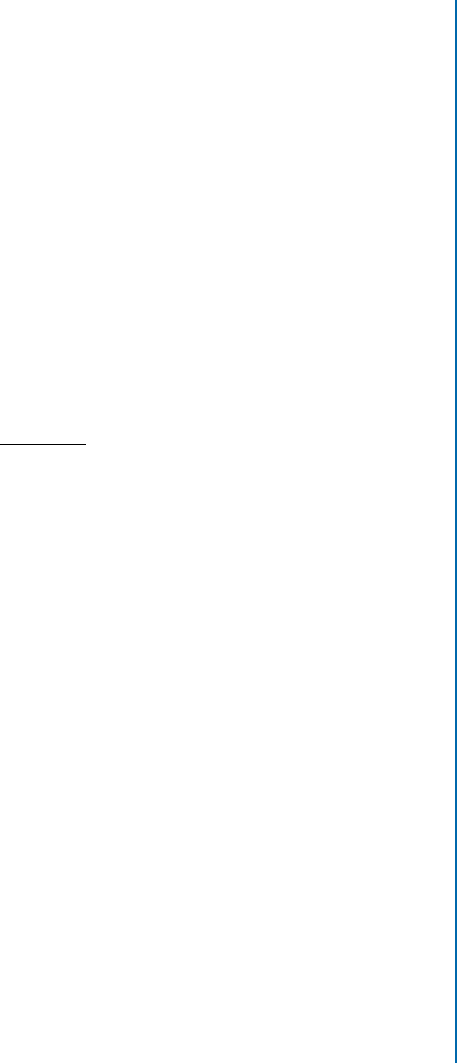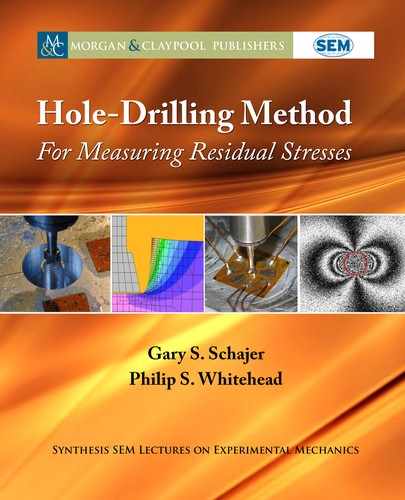
2.11. CONTOUR METHOD 35
R. e leading minus sign occurs because the measurement is made during stress unloading.
e triangular contour plot in Figure 2.5a corresponds to this kernel function.
Stoney’s Method is an interesting variation of the Layer Removal Method, typically used
for evaluating the residual stresses in electroplated surfaces. It commonly happens that substan-
tial in-plane residual stresses are developed during electroplating of one metal on to another, for
example, to produce a corrosion-resistant surface. Nickel plating is a common example of such
an application. However, the highly tensile residual stresses that are developed make nickel an
undesirable choice for plating fatigue sensitive components.
Stoney’s Method is a conceptual reversal of the Layer Removal Method insofar as it in-
volves addition of a layer of stressed material rather removal. Mathematically, the only effect of
this is to remove the minus sign from the residual stress calculation. In practice, Stoney type
measurements are done by electroplating a thin layer onto one surface of a substrate plate and
measuring the resulting plate curvature caused by the unsymmetrical loading. Alternatively, the
deformation may be monitored using strain gauges fixed on the unplated side. e plating stress
can then be determined from the measured surface strain " using:
D
E h "
3.1 / t
; (2.5)
where t is the plating thickness, h is the substrate plate thickness, E and , respectively, are the
Young’s modulus and Poisson’s ration of the substrate material. e factor .1 / occurs because
the plating stresses exist equally in both in-plane axial directions. Use of Equation (2.5) requires
that the plating is thin compared with the substrate plate, t << h, and that the substrate plate
is in turn thin compared with its in-plane dimensions.
2.11 CONTOUR METHOD
e various measurement methods described so far have required that the residual stresses have
a particular spatial distribution or to be uniform over significant distances. For example, for
the Splitting Method, Figure 2.3a, the residual stresses are assumed to vary linearly across the
cut ligaments. Similarly, for the Layer Removal method, Figure 2.9a the residual stresses need
to have the same through-thickness profile over the entire surface area of the measured plate.
ese methods therefore give either average stress values or one-dimensional profiles. e Con-
tour Method, illustrated in Figures 2.10a–c, is notable among the relaxation type measurement
techniques in that it can provide a detailed two-dimensional map of the normal residual stresses
acting on a plane within the specimen. e procedure involves cutting through the specimen
cross-section using a wire Electro-Discharge Machining (EDM), and measuring the surface
height maps of the cut surfaces using a coordinate measuring machine or a laser profilometer.
e residual stresses shown in Figure 2.10a are released by the cut and cause the material surface
to deform (pull inward for tensile stresses, bulge outward for compressive stresses), as shown in
Figure 2.10b. e originally existing residual stresses normal to the cut can be evaluated from
..................Content has been hidden....................
You can't read the all page of ebook, please click here login for view all page.
